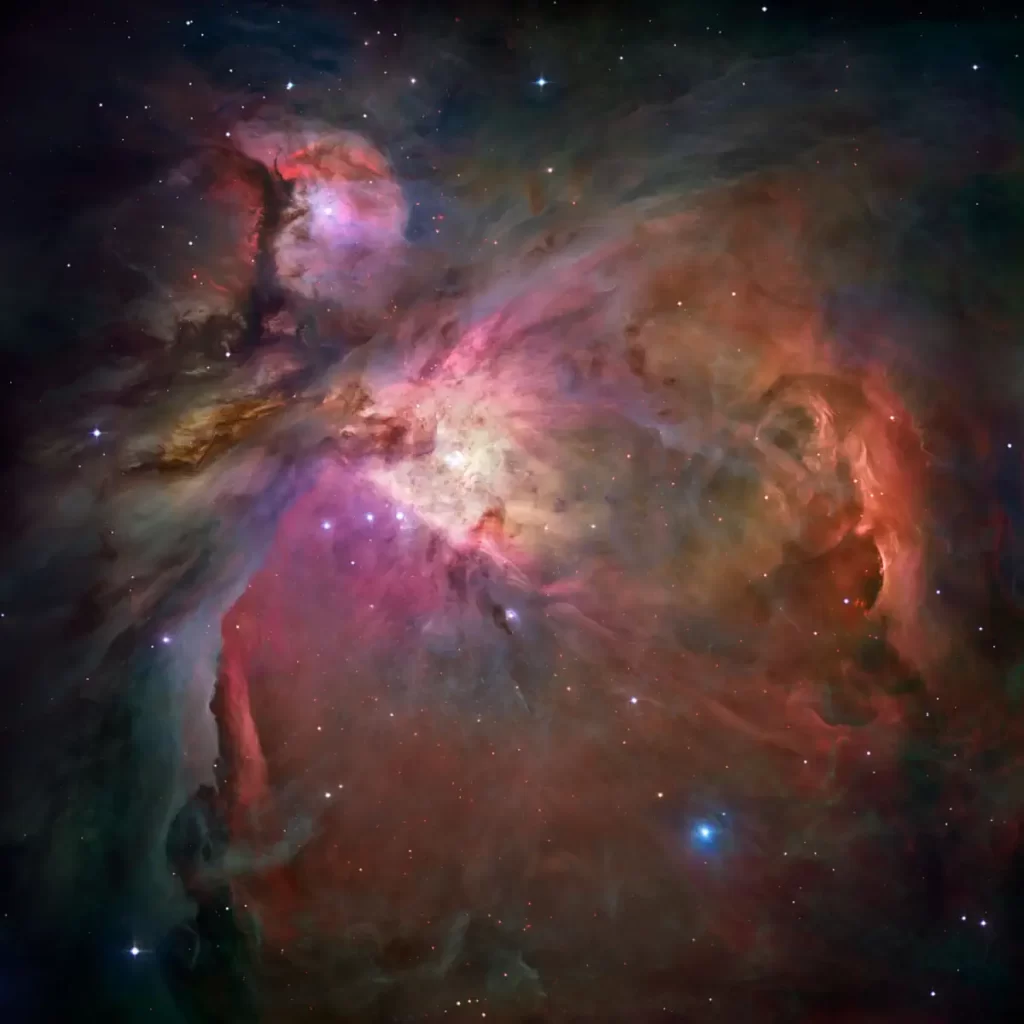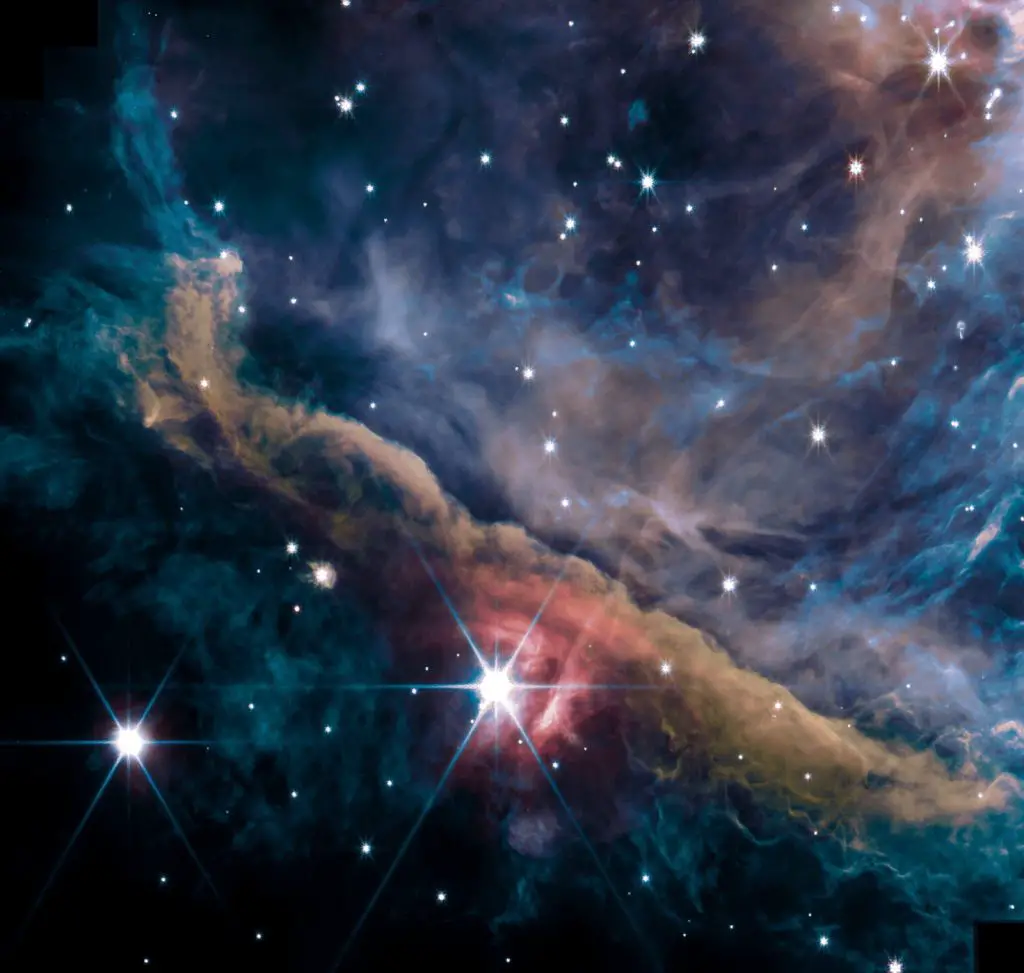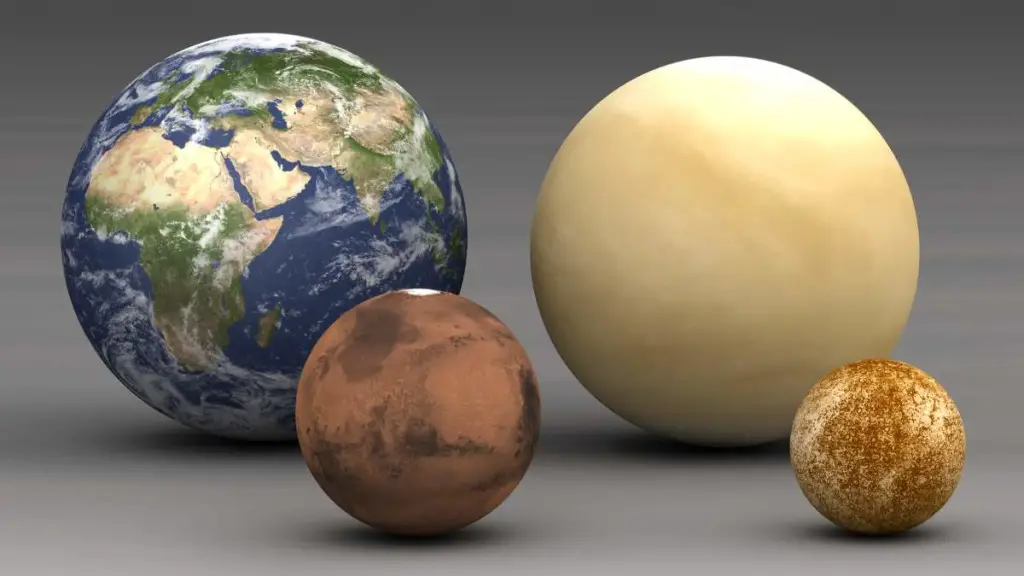This stunning video by “Epic Spaceman” shows how big the Orion Nebula is compared to our Sun. According to the creator, it took 6 months to prepare this video.
Space is big. You just won’t believe how vastly, hugely, mind-bogglingly big it is.
Douglas Adams, author of The Hitchhiker’s Guide to the Galaxy
https://www.youtube.com/watch?v=GI3X-lolpAk
Some excerpts from the video:
“There are few places if any in the Universe more beautiful than a nebula and The Orion Nebula is a particularly beautiful one.”
“A nebula might be the most beautiful thing in the Universe: a huge cloud of gas and dust, lit by the different colored stars inside it.”
“A nebula is bigger than a star because it has stars in it. But, I wasn’t sure exactly how much bigger. So I did the math, and the answer is… yeah, it’s quite a lot bigger. I can give you the numbers, but numbers are hard to picture.”
So, he created this amazing video to show us how big the Orion Nebula actually is.
Messier 42 (The Orion Nebula)
One of the most scrutinized and photographed objects in the night sky, The Orion Nebula (also known as Messier 42, M42, or NGC 1976) is a diffuse nebula situated in the Milky Way which is 1,344 ± 20 light-years (412.1 ± 6.1 pc) away from the Sun. It is one of the brightest nebulae and is visible to the naked eye in the night sky.
It is also the closest region of massive star formation to Earth. The Orion Nebula is estimated to be 24 light-years across. It has a mass of about 2,000 times that of the Sun.

Its bright, central region is the home of four massive, young stars that shape the nebula. The four hefty stars are called the Trapezium because they are arranged in a trapezoidal pattern.
The Orion Nebula is visible to the naked eye even from areas affected by some light pollution. So, even ancient civilizations observed it in the sky.
For example, there has been speculation that the Mayan culture’s likening of the Orion Nebula to a cosmic fire of creation.
But, surprisingly, neither Ptolemy’s Almagest (see notes 1) nor Al Sufi’s Book of Fixed Stars (see notes 2) noted this nebula, even though they both listed patches of nebulosity elsewhere in the night sky; nor did Galileo Galilei mention it, even though he also made telescopic observations surrounding it in 1610 and 1617. This has led to some speculation that a flare-up of the illuminating stars may have increased the brightness of the nebula.

The first discovery of the diffuse nebulous nature of the Orion Nebula is generally credited to French astronomer Nicolas-Claude Fabri de Peiresc (1 December 1580 – 24 June 1637), on November 26, 1610, when he made a record of observing it with a refracting telescope purchased by his patron Guillaume du Vair.
The first published observation of the nebula was by the Jesuit mathematician and astronomer Johann Baptist Cysat of Lucerne (c. 1587 – March 17, 1657) in his 1619 monograph on the comets. He made comparisons between it and a bright comet seen in 1618 and described how the nebula appeared through his telescope:
“…one sees how in like manner some stars are compressed into a very narrow space and how roundabout and between the stars a white light like that of a white cloud is poured out.”
French astronomer Charles Messier (26 June 1730 – 12 April 1817) observed the nebula on March 4, 1769, and he also noted three of the stars in Trapezium. Messier published the first edition of his catalog of deep-sky objects in 1774 (completed in 1771). As the Orion Nebula was the 42nd object in his list, it became identified as Messier 42 or M42.
The James Webb Space Telescope Image of the Orion Nebula
The inner region of the Orion Nebula (Messier 42) as seen by the James Webb Space Telescope’s NIRCam instrument. This is a composite image from several filters that represents emissions from ionized gas, hydrocarbons, molecular gas, dust, and scattered starlight.
Most prominent is the Orion Bar, a wall of dense gas and dust that runs from the top left to the bottom right in this image, and that contains the bright star θ2 Orionis A. The scene is illuminated by a group of hot, young massive stars (known as the Trapezium Cluster) that is located just off the top right of the image.
The strong and harsh ultraviolet radiation of the Trapezium cluster creates a hot, ionized environment in the upper right, and slowly erodes the Orion Bar away.
Molecules and dust can survive longer in the shielded environment offered by the dense Bar, but the surge of stellar energy sculpts a region that displays an incredible richness of filaments, globules, and young stars with disks and cavities.

Notes
- Claudius Ptolemy (Latin: Claudius Ptolemaeus; c. 100 – c. 170 AD) was a mathematician, astronomer, astrologer, geographer, and music theorist. His Almagest is a 2nd-century Greek-language mathematical and astronomical treatise on the apparent motions of the stars and planetary paths.
- ‘Abd al-Rahman al-Sufi (December 7, 903 – May 25, 986) was a Persian astronomer. Written around the year 964, The Book of Fixed Stars is an astronomical text written by him.
Sources
- Messier 42 (The Orion Nebula) on the NASA website
- Orion Nebula on Wikipedia
- “Hubble Panoramic View of Orion Nebula Reveals Thousands of Stars” on the Hubble Space Telescope website
- Moon Landings: All-Time List [1966-2025] - February 2, 2025
- What Is Max-Q and Why Is It Important During Rocket Launches? - January 16, 2025
- Top 10 Tallest Rockets Ever Launched [2025 Update] - January 16, 2025


